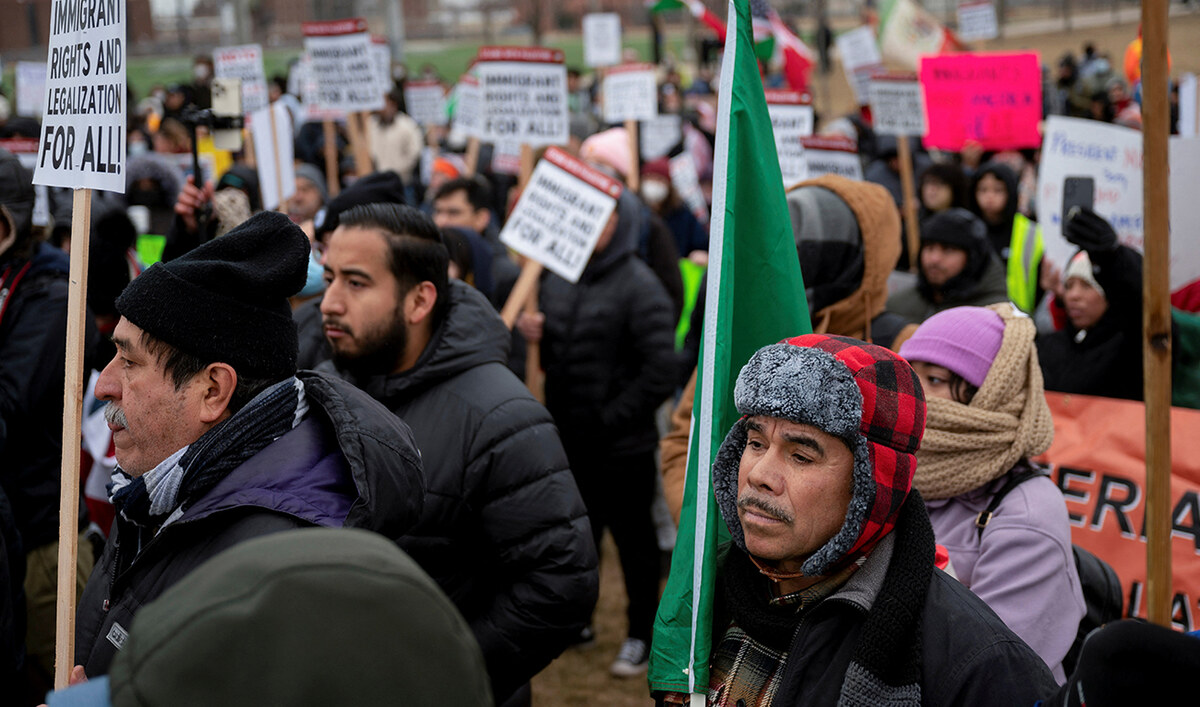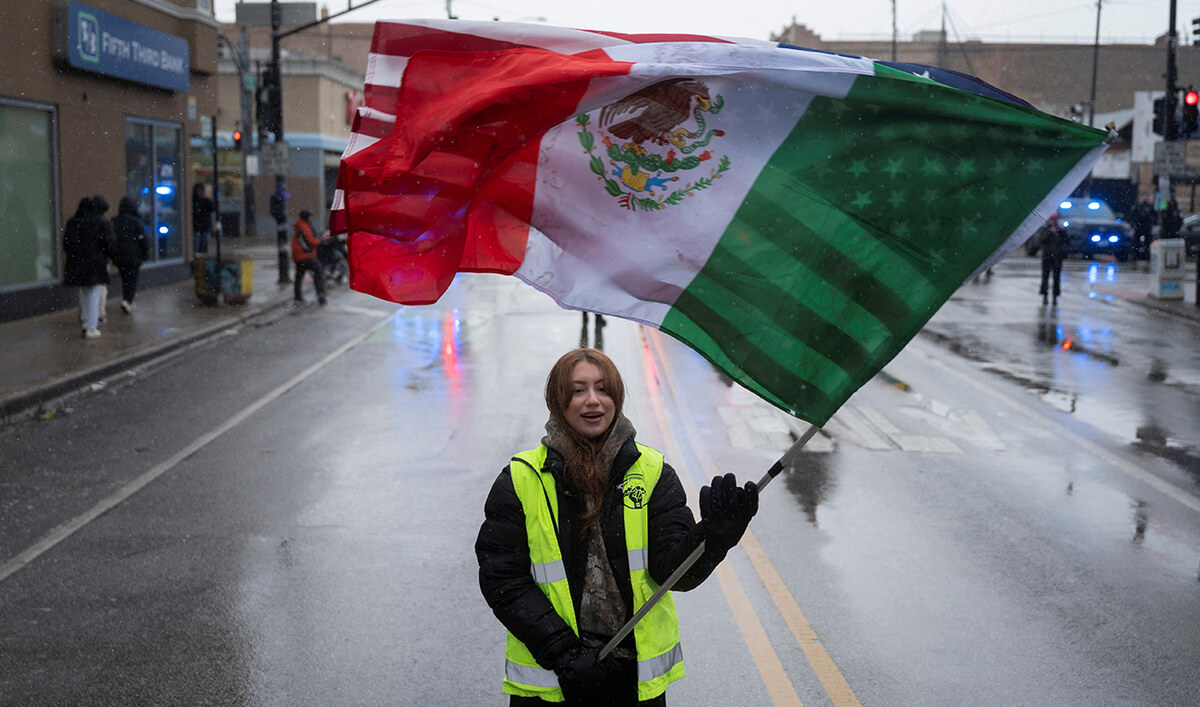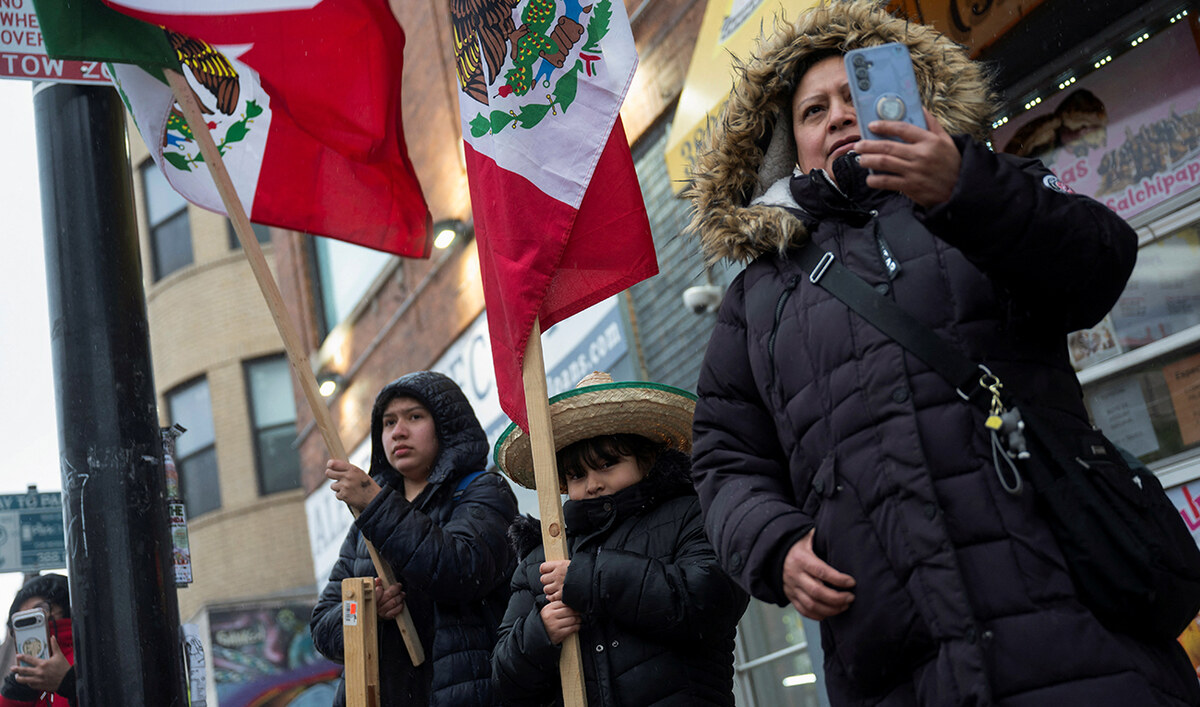NEW DELHI: Millions of Indians began voting Friday in a six-week election that’s a referendum on Narendra Modi, the populist prime minister who has championed an assertive brand of Hindu nationalist politics and is seeking a rare third term as the country’s leader.
The voters began queuing up at polling stations hours before they were allowed in at 7 a.m. in the first 21 states to hold votes, from the Himalayan mountains to the tropical Andaman Islands. Nearly 970 million voters — more than 10 percent of the world’s population — will elect 543 members to the lower house of Parliament for five years during the staggered elections that run until June 1. The votes will be counted on June 4.
One voter said she came early to avoid the summer heat later in the day.
Prime Minister Modi urged people to vote in record numbers. “I particularly call upon the young and first-time voters to vote in large numbers. After all, every vote counts and every voice matters!” he said in a message on the social media platform X.
This election is seen as one of the most consequential in India’s history and will test the limits of Modi’s political dominance.
If Modi wins, he’ll be only the second Indian leader to retain power for a third term, after Jawaharlal Nehru, the country’s first prime minister.
Most polls predict a win for Modi and his Hindu nationalist Bharatiya Janata Party, who are up against a broad opposition alliance led by the Indian National Congress and powerful regional parties.
It’s not clear who will lead India if the opposition alliance, called INDIA, wins the election. Its more than 20 parties have not put forward a candidate, saying they will choose one after the results are known.
The BJP is facing the toughest challenge in southern Tamil Nadu state with 39 seats where the voting is being held on Friday. The BJP drew a blank in 2019 and won one seat in the 2014 elections with the region dominated by two powerful regional groups, Dravida Munnetra Kazhagam and All India Anna Dravida Munnetra Kazhagam.
Modi focussed on the state this time and visited it more than a dozen times, holding several rallies and roadshows.
P. Chidambaram, an opposition Congress party leader and the country’s former finance minister, said after voting in Tamil Nadu state that people would not vote for the BJP in the state as “It is imposing one language, one culture, one system and one kind of food.”
The voting also is taking place in the northeastern state of Manipur that was ravaged by a near-civil war for a year caused by fighting between the majority Meitei and tribal Kuki-Zo people. Mobs have rampaged through villages and torched houses.
The election authority has set up voting stations for nearly 320 relief camps where more than 59,000 men, women and children are living. The state stands divided between a valley controlled by the Meiteis and the Kuki-dominated hills.
More than 150 people were killed and over 60,000 displaced. The voting for two seats will be completed on April 26.
In the 2019 elections, the BJP and its allies had won 39 of 102 seats where the voting is taking place on Friday. These include Rajasthan, Uttarakhand and West Bengal states.
The election comes after a decade of Modi’s leadership, during which the BJP has consolidated power through a combination of Hindu-first politics and economic development.
Modi has ratcheted up Hindu nationalist rhetoric on the campaign trail, and has sought to present himself as a global leader. His ministers tout him as the steward of a surging India, while his supporters celebrate his campaign promise to make India a developed nation by 2047, when it marks 100 years of independence.
But while India’s economy is among the world’s fastest-growing, many of its people face growing economic distress. The opposition alliance is hoping to tap into this, seeking to galvanize voters on issues like high unemployment, inflation, corruption and low agricultural prices that have driven two years of farmers’ protests.
Critics warn that Modi has turned increasingly illiberal and that he could use a third term to undermine India’s democracy. His Hindu nationalist politics, they argue, has bred intolerance and threatens the country’s secular roots.
The alliance has promised to arrest the democratic slide it says India has witnessed under Modi’s rule. They accuse Modi of sidelining elected ministers in favor of trusted bureaucrats and using tax authorities and the police to harass critics and opposition parties.
“Modi has a very authoritarian mindset. He doesn’t believe in democracy. He doesn’t believe in Parliamentarianism,” said Christophe Jaffrelot, who has written about Modi and the Hindu right.
Modi insists that India’s commitment to democracy is unchanged. He told a Summit for Democracy meeting in New Delhi in March that ‘“India is not only fulfilling the aspirations of its 1.4 billion people, but is also providing hope to the world that democracy delivers and empowers.’’
The Indian leader enjoys vast popularity among India’s 1.4 billion people. His BJP dominates in Hindi-speaking northern and central parts of India, and is now trying to gain a foothold in the east and south to capture a two-thirds majority. Modi and other BJP candidates have repeatedly vowed to take at least 400 seats.
The party hopes for a landslide win powered by its popular welfare programs, which it says have improved access to clean toilets, health care and cooking gas, as well as providing free grain to the poor. Moves like the construction of a controversial temple to Ram on the site of a demolished mosque, and the scrapping of the disputed Muslim-majority region of Kashmir’s former autonomy, may resonate with supporters who hail him as the champion of the Hindu majority.
“Any party that comes back for a third term, and with a brute majority, is a scary prospect for democracy,” said Arati Jerath, a political commentator.
Modi’s two terms have seen civil liberties in India come under attack and it implementing what critics say are discriminatory policies. Peaceful protests have been crushed with force. A once free and diverse press is threatened, violence is on the rise against the Muslim minority, and government agencies have arrested opposition politicians in alleged corruption cases.
The BJP has denied its policies are discriminatory and says its work benefits all Indians.
India starts voting in the world’s largest election as Modi seeks third term as PM
https://arab.news/nyayz
India starts voting in the world’s largest election as Modi seeks third term as PM

- Nearly 970 million voters will elect 543 members to lower house of Parliament
- The staggered elections will run until June 1, votes will be counted on June 4























